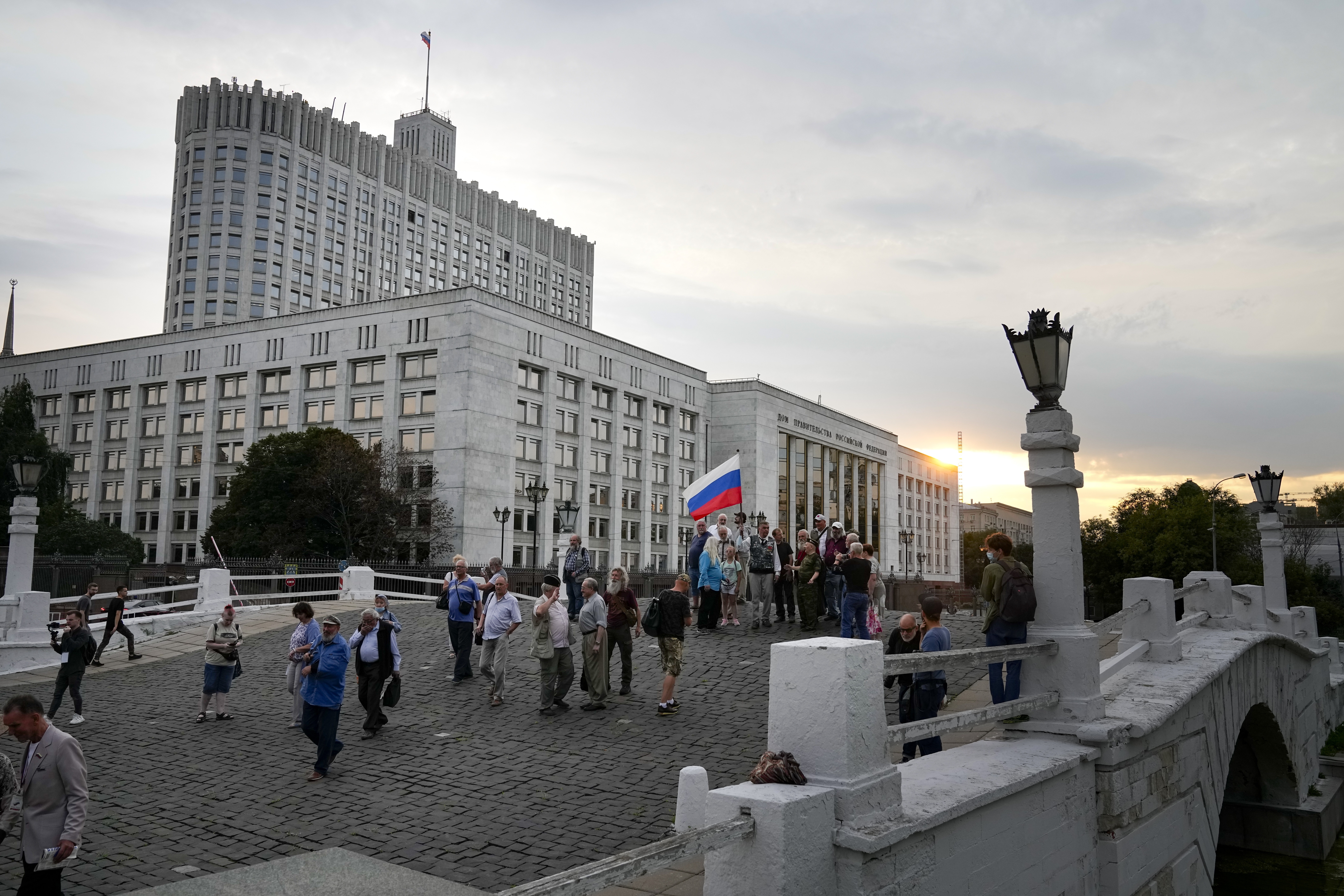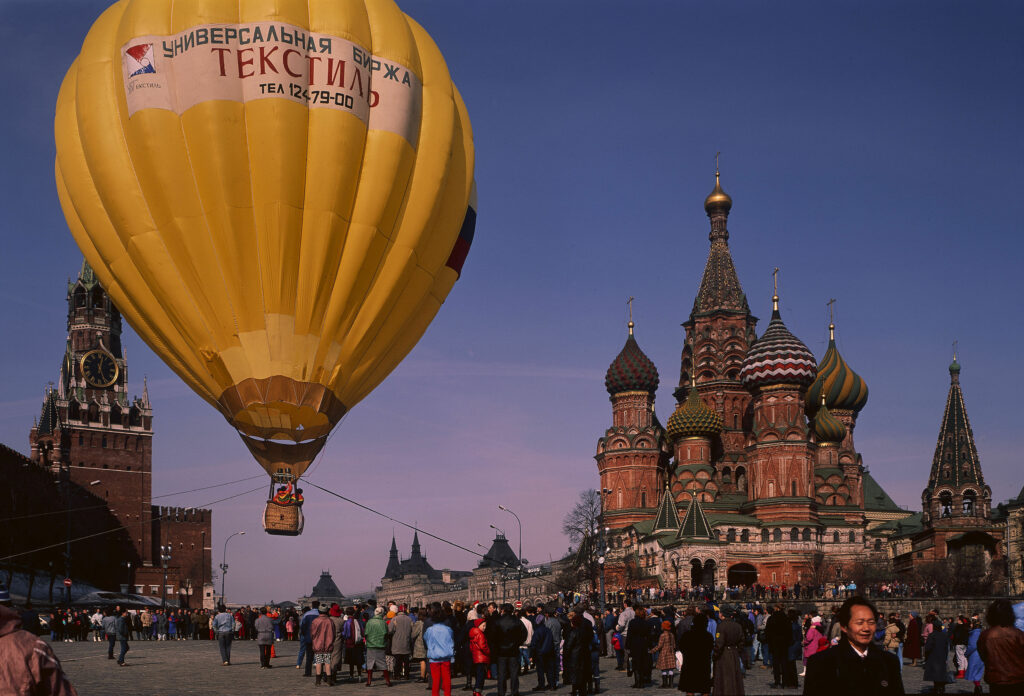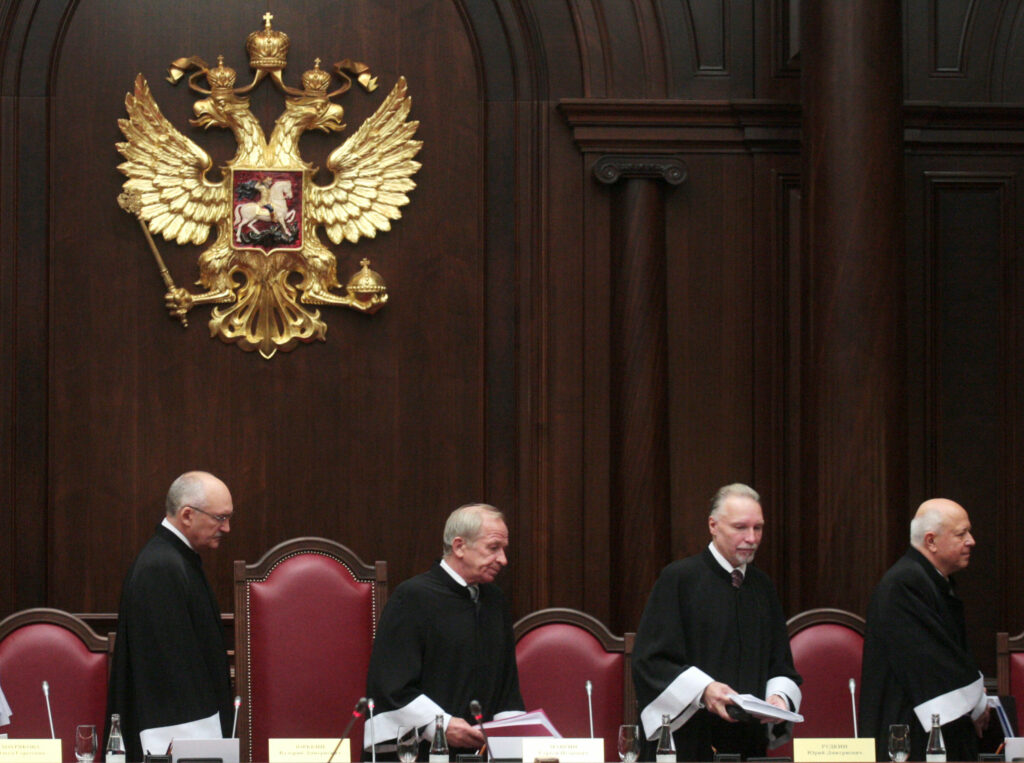The preface to the «History of the Russian Constitution,» the ten-volume chronicle assembled by Oleg Rumantsayev (a prominent legal scholar and the Responsible Secretary of the Constitutional Commission from 1990 to 1993) and others, was written by Valery Zorkin (the Chairman of the Constitutional Court of Russia) and begins thus; «Looking back, we can reasonably conclude that the work of the [Constitutional] Commission was effective. Most of the draft provisions were included in the text of the Constitution adopted in 1993. The Constitution has become the greatest achievement of the entire post-Soviet development, the foundation of stability and dynamism in Russia.» Zorkin goes on to say, «The Constitution is a transition to a fundamentally new stage of Russia’s development. To the stage when a person with his rights and freedoms finds himself at the center of the political system.» These eloquent words, however, are in sharp contrast to the reality of Russia today. The 1993 Constitution has been amended, reshaped, and reformatted to suit the needs of the ruling regime. Zorkin’s efforts to salvage some sort of legacy from the three years of work he and others dedicated their lives to now ring hollow.
The 1993 Constitution granted the President extraordinarily strong powers, thereby contributing to Russia’s drift towards authoritarianism. However, if one were to look back to the fall of 1991, they would see a very different version of the Constitution—one that was far more balanced and well-thought-out. This 1991 document was not the haphazard result of a rushed effort; it was the culmination of a large group of legal scholars with diverse views who diligently hammered out a compromise. Had it been adopted, it might well have been the foundation Zorkin spoke of. At present, several political groups of Russian exiles are working on visions for Russia’s future after Putin. For instance, in November, the Anti-War Committee led by Mikhail Khodorkovsky, the Congress of People’s Deputies organized by Ilya Ponomarev, and the Forum led by Yulia Navalnaya, are convening to discuss scenarios for the country’s exit from the current crisis. It is worth returning to that period of great uncertainty and examining not only the Constitution that could have been, but also how it came about, and what lessons can be drawn from it to shape the future of Russia.
The Commission
Constitutional projects had existed in Russia since the 18th century. As early as 1730, a group of aristocrats nearly succeeded in establishing a constitutional monarchy. Subsequently, Catherine the Great and several of her successors, including her grandson Alexander I, pursued similar goals. Unfortunately, none of these projects reached implementation.
The stagnation in adopting a constitution caused increasing discontent, culminating in the Decembrist uprising of 1825, when officers and soldiers gathered in Peter’s Square and called for «Constantine and Constitution,» urging the creation of a constitutional monarchy. The answer, of course, was cannon fire, but the idealization of constitutionalism continued to ebb and flow in Russian circles. Russia came closest to adopting a constitution at the beginning of the 20th century. Many historians consider the adoption of the Fundamental Laws of the Russian Empire in 1906 to be, de facto, Russia’s constitution. After the monarchy was overthrown in 1917, a Legal Conference under the Provisional Government worked on drafting a constitution.
The first actual document titled «Constitution» was adopted in Russia in 1918, though this project was far from democratic. The USSR constitutions of 1924, 1936, and 1977 were formal documents that masked a one-party dictatorship and did not reflect the actual power structure. Specifically, by 1985, Russia was formally governed by the 1978 Constitution of the Russian Soviet Federative Socialist Republic (RSFSR). However, as with the USSR constitutions, it was largely ceremonial. Between 1985 and 1993, several hundred amendments were made, but even in this form, it was a temporary solution.
The question of a new constitution for Russia arose during perestroika. By the time of Gorbachev’s Glasnost, discussions around meaningful constitutional reform had begun. Oleg Rumantsayev notes that among legal scholars, Perestroika clubs became a nexus of debate on what it would mean should the USSR or Russia adopt a new constitution. It was in this context that the concept of creating a commission to draft a new constitution was introduced at the First Congress of People’s Deputies in June 1990.
The Congress resolution ordered the Supreme Soviet to organize the Commission and set a deadline of January 1991. The Commission consisted of 102 people with Boris Yeltsin as Chairman and Oleg Rumantsayev, a 30-year-old lawyer and the driving force behind the Constitutional Commission, as deputy chairman. Rumantsayev had advocated for the Commission’s creation within Democratic Russia circles, gaining Yeltsin’s support in exchange for supporting Yeltsin’s bid for the Chairmanship of the Congress—a race Yeltsin won by just four votes.
Rumantsayev effectively led the Commission, chairing the expert committee and working group that drafted the constitution. The working group of 31 members prepared the draft, which was then presented to the full commission. The expert group, consisting of 25 members (22 of whom held doctorates in law), included Valery Zorkin, a 47-year-old professor of law, who helped shape the overall document. Despite the Commission’s attempts to maintain neutrality and distance itself from politics, this approach made it vulnerable to political attacks. Nevertheless, by October 1991, following the August Coup and numerous rounds of amendments, the new Constitution was ready.
The Constitution
The October 1991 document was a product of democratic ideals. It began with a declaration: «We are the multinational people of the Russian Federation, united by historical destiny and life on this earth, determined to assert freedom, human rights, and a decent life, ensure civil peace and interethnic harmony, revive society, make the democratic statehood of the Russian Federation [inviolable].» The Constitution declared itself to be a document for all peoples of Russia, with legitimacy belonging to the people and the law.
Article 3, Section 3 declared: «Usurpation of State power [by any individual or group] is the gravest crime,» while Section 5 declared: «Citizens of the Russian Federation have the right, if other means cannot be used, to resist anyone who tries to eliminate the constitutional system by force or coercion.» It is rare to see any constitution enshrine rebellion in the protection of constitutional norms. These clauses were written under the shadow of Russia’s history of political violence and the Bolshevik coup, which had short-circuited the last attempt to create a constitutional state. The document even called for a national and regional human rights supervisor to ensure that rights guaranteed under the Constitution were upheld. This office persists in modern Russia, albeit in a diminished form.
The Constitution also reflected the long shadow of Soviet rule and the abuse of citizens. Its first 13 chapters focused largely on human rights, which were expansive and without exception. The media was declared free, censorship banned, and access to media by political parties had to be equal. Religion, association, and movement were unrestricted. The state was confined to the role of guarantor of security, health, and safety. The State itself was federal, with republics and regions given different standings. Republics were defined as «self-governing territorial communities,» which may or may not contain autonomous regions. Regional rights were defined by law, not the Constitution, except for federal territories.
The uneven federalism of Russia at the time consisted of sixteen autonomous republics, five autonomous oblasts, ten autonomous okrugs, six krais, and forty oblasts. The Russian political map of its federal entities resembled Austria-Hungary—multiple regions of varying autonomy with entrenched influence.
The actual state structure within the proposed Constitution was radical in its departure from previous norms but fundamentally sound. The government was a federal system with three coequal branches—a bicameral legislature elected every four years, an executive headed by the President, and the Courts. The legislature consisted of a lower house of 300 deputies elected from districts and an upper chamber, the Federal Soviet, with three deputies from each territory.
The legislature’s power was expansive, with broad oversight of the executive. The President was a popularly elected but still powerful figure. The Presidency, as envisioned in 1991, would be a guarantor of the rights of minorities and a central balance between regional and federal power.
As Zorkin wrote, «Without the separation of powers, despotism ensues, and a State governed by the rule of law is impossible.» At the same time, authorities needed to remain capable of carrying out tasks within the rule of law. The President and Vice President were elected for four-year terms and banned from serving more than two terms for life.
The judiciary was structured as a trinary system with a Constitutional Court serving as the highest court, a Supreme Court supervising the judiciary, and an arbitration court supervising commercial law. The judiciary was meant to function as a separate, autonomous branch with the prosecutor operating independently.
In 1991, Russia was presented with an expansive constitution that required further polishing. The Commission, mindful of the lessons of the past, sought to correct flaws, establish checks and balances, and ensure separation of powers. The document expansively defined citizens’ rights while curtailing the state’s ability to resurrect a dictatorship. When presented with the Constitution, however, the Congress of People’s Deputies failed to adopt it, leaving the issue of constitutional governance unsettled until the violence of 1993.
Why was the Constitution Not Adopted
Under the RSFSR Constitution in effect as of November 1991, the Congress of People’s Deputies had the exclusive right to adopt a new constitution. Technically, the new constitution could have been adopted during the session on November 2. So why was it not adopted? There were myriad reasons. On November 2, during a session of the Congress of People’s Deputies, Boris Yeltsin, as Chairman of the Constitutional Commission, delivered a report on the Constitution, noting that a strong document had been prepared. Although Yeltsin warned that delaying constitutional reform would be a major political mistake, he did not push for immediate adoption.
Instead, Yeltsin suggested that amendments be discussed, the draft finalized, and a nationwide referendum considered. The Congress was unconvinced. The new Constitution, it was generally felt, addressed issues of preventing totalitarianism but obscured concerns of regional ethnic groups, many of whom were declaring sovereignty within Russia, just as Russia had done within the USSR. Only Chechnya had pushed for independence, and only Tatarstan was in a position to join it, but nevertheless, the fear was that minority interests would be obscured. There were also objections from Russian nationalists dissatisfied with its neutrality.
The draft faced criticism from deputies representing national-state and national-territorial entities, such as Kabardino-Balkaria, Karachay-Cherkessia, Adygea, and Dagestan, who felt it did not account for small ethnic groups.
Yeltsin did not face strong resistance, and the 5th Congress of People’s Deputies was loyal to him, even granting extraordinary powers for economic reforms. It is likely that if Yeltsin had insisted on adoption, the issue would have been taken more seriously. However, Yeltsin’s main focus was the urgent economic issues and transitioning to a market economy. Moreover, Yeltsin was cultivating minority regions for support, forming an advisory council that would later become the Federal Soviet. Thus, the Constitution was put on pause while a Federal Treaty was negotiated.
What Can We Learn?
It is not enough for any future convention of Russian leaders to adopt a new constitution—they must have the political will to see it enacted. The Constitution of 1991 contained aspects that were rendered impotent by the 1993 document. The 1993 Constitution undercut the ideal of separation of powers by placing vast authority in the hands of the President—what legal scholars refer to as crown presidentialism. A future constitution must account for this, but simply switching to a parliamentary system would be fraught with challenges. Russia’s regional organization remains highly irregular.
A future Russia may need to reorganize itself internally to create a more manageable number of coequal states that can enter a federated state on equal footing. This may necessitate allowing some regions that are homelands of ethnic minorities to go their own way. Whether this is politically viable remains to be seen. The Constitution of 1991 showed a desire for democratic transformation, but having a desire for change without the political will to enact it leaves promises unfulfilled.
The draft Constitution prepared in 1991 was more balanced in terms of separation of powers than the version adopted in 1993. The need for a new Constitution was acknowledged by the 5th Congress of People’s Deputies, as the country could not enter a new stage with the old «Brezhnev» Constitution. However, for Yeltsin and many deputies, adoption was not a top priority. Against the backdrop of an escalating economic crisis, the main focus was market reform initiated by Yegor Gaidar’s government.
In the fall of 1991, Yeltsin prioritized the economy, delaying the adoption of a new Constitution by two years. The 5th Congress was the last «loyal» Congress for Yeltsin. Subsequently, deteriorating economic conditions strained relations between the President and Congress. The possibility of adopting the Constitution in November 1991 was effectively lost by 1992. The confrontation between the Congress and the President, as well as personal animosity, ultimately culminated in the shelling of the Congress building by tanks in October 1993.











